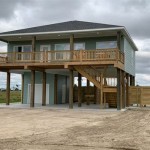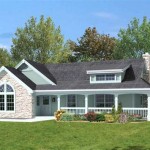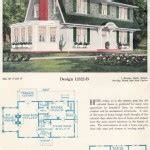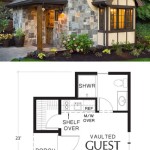Desert house plans are architectural designs specifically created for constructing homes in desert regions, which often have unique climatic conditions and environmental challenges. These plans prioritize energy efficiency, thermal comfort, and water conservation to adapt to the extreme heat, dryness, and scarcity of water resources in desert environments.
Desert house plans typically incorporate sustainable design features such as passive solar heating and cooling, insulation to minimize heat gain and loss, and water-efficient landscaping to conserve precious resources. By carefully considering the local climate and environmental conditions, desert house plans aim to create comfortable and livable homes that respect the desert’s fragile ecosystem.
Transition:
In this article, we will explore the key considerations, design principles, and specific features of desert house plans. By understanding the unique challenges and opportunities of building in desert regions, homeowners and architects can create sustainable, energy-efficient, and comfortable homes that thrive in these demanding environments.
When designing a desert house, it is crucial to consider specific factors to ensure comfort, energy efficiency, and sustainability in the unique desert environment.
- Passive solar design
- Energy efficiency
- Thermal insulation
- Water conservation
- Natural ventilation
- Shading devices
- Native landscaping
- Durable materials
- Low maintenance
- Fire resistance
By incorporating these elements into desert house plans, architects and homeowners can create dwellings that are not only functional but also environmentally friendly and well-adapted to the desert’s unique climatic conditions.
Passive solar design
Passive solar design is a building design approach that utilizes the sun’s energy for heating and cooling purposes, reducing the need for mechanical systems and lowering energy consumption. In desert house plans, passive solar design is particularly important for maintaining thermal comfort and minimizing energy costs.
- Orientation: The orientation of the house is crucial in passive solar design. In the northern hemisphere, south-facing windows and walls allow for maximum solar heat gain during the winter months, while in the southern hemisphere, north-facing windows and walls should be prioritized. This orientation optimizes exposure to the sun’s rays, maximizing natural heating and reducing the need for artificial heat sources.
- Thermal mass: Thermal mass refers to materials with high heat capacity, such as concrete, stone, or adobe. These materials absorb and store solar heat during the day and release it gradually at night, providing a natural form of thermal regulation. Desert house plans often incorporate thermal mass elements, such as thick walls and radiant floor heating systems, to maintain a comfortable indoor temperature with minimal energy input.
- Insulation: Insulation plays a vital role in passive solar design by minimizing heat loss during the winter and heat gain during the summer. Desert house plans typically use high-performance insulation materials in walls, ceilings, and floors to reduce thermal bridging and maintain a stable indoor temperature, reducing the need for heating and cooling systems.
- Glazing: Windows and glazed surfaces are essential for allowing sunlight to enter the home. Desert house plans often use energy-efficient windows with double or triple glazing, low-e coatings, and shading devices to maximize solar heat gain while minimizing heat loss. Proper window placement and sizing can also optimize natural daylighting, reducing the need for artificial lighting.
By carefully considering these elements of passive solar design, desert house plans can effectively harness the sun’s energy for heating and cooling, creating comfortable and energy-efficient homes that are well-adapted to the desert environment.
Energy efficiency
Energy efficiency is a crucial aspect of desert house plans, as it directly impacts the home’s operating costs, environmental footprint, and overall comfort. By incorporating energy-efficient measures, desert homes can significantly reduce their energy consumption, lower utility bills, and contribute to a more sustainable lifestyle.
One key aspect of energy efficiency in desert house plans is the use of high-performance building materials. This includes insulation, windows, and doors that meet or exceed industry standards for thermal resistance. Proper insulation in walls, ceilings, and floors minimizes heat transfer, reducing the need for heating and cooling systems to maintain a comfortable indoor temperature. Energy-efficient windows with double or triple glazing, low-e coatings, and shading devices can significantly reduce heat gain and heat loss, further improving the home’s energy performance.
Another important consideration for energy efficiency is the use of energy-efficient appliances and lighting systems. Desert house plans should prioritize Energy Star-rated appliances, which meet strict energy efficiency criteria set by the U.S. Environmental Protection Agency (EPA). These appliances consume less energy, resulting in lower utility bills and reduced environmental impact. Additionally, the use of LED lighting throughout the home can significantly reduce energy consumption compared to traditional incandescent or fluorescent bulbs.
Furthermore, desert house plans often incorporate renewable energy sources to further enhance energy efficiency and reduce reliance on fossil fuels. Solar photovoltaic (PV) systems can be installed to generate electricity from sunlight, offsetting the home’s energy consumption and potentially eliminating the need for grid-supplied electricity. Solar thermal systems can be used to heat water, reducing the demand for conventional water heaters. By integrating renewable energy sources, desert homes can achieve greater energy independence and sustainability.
By carefully considering these energy efficiency measures, desert house plans can minimize energy consumption, reduce operating costs, and create more environmentally friendly and comfortable homes that are well-adapted to the unique challenges of the desert environment.
Thermal insulation
Thermal insulation is a critical element of desert house plans, as it plays a vital role in maintaining a comfortable indoor temperature and reducing energy consumption. Proper insulation minimizes heat transfer between the interior and exterior of the home, preventing heat gain during the hot summer months and heat loss during the cold winter months.
There are several types of insulation materials commonly used in desert house plans, each with its own advantages and properties. Fiberglass insulation is a popular choice due to its cost-effectiveness and ease of installation. It is made from glass fibers and is available in batts, rolls, and loose-fill form. Cellulose insulation is another common option, made from recycled paper and treated with fire retardants. It is typically installed as loose-fill or spray foam.
In addition to traditional insulation materials, desert house plans may also incorporate reflective insulation, radiant barriers, and air sealing measures to enhance thermal performance. Reflective insulation consists of a thin, reflective material, such as aluminum foil, and is placed in attics or wall cavities to reflect radiant heat away from the home.
Radiant barriers are similar to reflective insulation but are typically installed in the roof assembly to reduce heat transfer from the sun. Air sealing involves sealing gaps and cracks around windows, doors, and other openings to prevent air infiltration and exfiltration, which can lead to heat loss or gain.
By carefully considering thermal insulation and incorporating the appropriate materials and techniques, desert house plans can effectively minimize heat transfer, maintain a comfortable indoor temperature, and reduce energy consumption, making the home more comfortable and cost-effective to operate in the unique desert environment.
Water conservation
Water conservation is a critical aspect of desert house plans, as water resources are often scarce in desert regions. By incorporating water-efficient measures, desert homes can significantly reduce their water consumption, minimize their environmental impact, and ensure a sustainable water supply for both the home and the surrounding community.
- Low-flow fixtures: Low-flow fixtures, such as toilets, faucets, and showerheads, are designed to reduce water consumption without sacrificing performance. Desert house plans should prioritize the use of low-flow fixtures throughout the home to minimize water usage.
- Water-efficient appliances: Water-efficient appliances, such as washing machines and dishwashers, are designed to use less water per cycle. Desert house plans should consider incorporating water-efficient appliances to further reduce water consumption.
- Landscaping with native plants: Native plants are adapted to the local climate and require less water than non-native plants. Desert house plans should prioritize the use of native plants in landscaping to minimize water usage for irrigation.
- Rainwater harvesting systems: Rainwater harvesting systems collect and store rainwater for non-potable uses, such as watering plants or flushing toilets. Desert house plans can incorporate rainwater harvesting systems to supplement the home’s water supply and reduce reliance on municipal water sources.
By carefully considering these water conservation measures, desert house plans can minimize water consumption, reduce the home’s environmental footprint, and ensure a sustainable water supply in the unique desert environment.
Natural ventilation
Natural ventilation is a passive cooling strategy that utilizes natural forces to circulate air and remove heat from a building. In desert house plans, natural ventilation is particularly important for maintaining thermal comfort and reducing energy consumption.
One key aspect of natural ventilation in desert house plans is the use of cross-ventilation. Cross-ventilation occurs when air is allowed to flow through a building from one side to the other, creating a cooling effect. Desert house plans often incorporate features such as windows and doors on opposite sides of the home, allowing for cross-ventilation to occur. This can be particularly effective in capturing prevailing breezes and creating a comfortable indoor environment.
Another important consideration for natural ventilation is the use of thermal chimneys. Thermal chimneys are vertical shafts that allow hot air to rise and escape from the building. Desert house plans may incorporate thermal chimneys in the form of clerestory windows or roof vents. As hot air rises within the home, it is drawn out through the thermal chimney, creating a natural airflow and reducing the buildup of heat inside the home.
In addition to cross-ventilation and thermal chimneys, desert house plans may also incorporate other natural ventilation strategies, such as wind towers and evaporative cooling. Wind towers are vertical structures that capture and direct prevailing winds into the home, providing a natural source of ventilation. Evaporative cooling systems use the principle of evaporation to cool the air, providing a more comfortable indoor environment in hot and dry climates.
By carefully considering natural ventilation strategies and incorporating appropriate design features, desert house plans can effectively reduce heat gain, improve thermal comfort, and minimize the need for mechanical cooling systems. This can lead to significant energy savings and a more sustainable and comfortable living environment in the desert climate.
Shading devices
Shading devices are architectural elements used to control the amount of sunlight that enters a building, reducing heat gain and glare while maintaining natural daylighting. In desert house plans, shading devices play a critical role in maintaining thermal comfort and energy efficiency.
One of the most common types of shading devices is overhangs. Overhangs are horizontal projections from the roof that shade windows and walls from direct sunlight. The depth and angle of the overhang are carefully calculated to maximize solar protection while allowing for natural light to enter the home during the winter months. Overhangs can be fixed or adjustable, allowing for greater control over the amount of sunlight entering the home.
Another type of shading device commonly used in desert house plans is awnings. Awnings are retractable fabric or metal canopies that are installed over windows or doors. Awnings provide flexible sun control, allowing homeowners to adjust the amount of shade as needed. When fully extended, awnings can block out most of the sunlight, reducing heat gain and glare. When retracted, awnings allow for natural light to enter the home and provide a view to the outdoors.
Desert house plans may also incorporate exterior shutters or blinds. Shutters are hinged panels that can be closed to block out sunlight and opened to allow for natural light and ventilation. Blinds are similar to shutters but consist of slats that can be adjusted to control the amount of sunlight entering the home. Exterior shutters and blinds provide excellent sun control and privacy, and can also enhance the home’s architectural style.
In addition to these traditional shading devices, desert house plans may also incorporate more innovative shading solutions, such as solar screens and reflective coatings. Solar screens are exterior screens made of a tightly woven fabric that blocks out a significant amount of solar heat and glare while still allowing for visibility. Reflective coatings can be applied to windows to reflect sunlight away from the home, reducing heat gain.
By carefully considering shading devices and incorporating appropriate solutions, desert house plans can effectively reduce heat gain, improve thermal comfort, and minimize the need for mechanical cooling systems. This can lead to significant energy savings and a more sustainable and comfortable living environment in the desert climate.
Native landscaping
Native landscaping is a sustainable and water-wise approach to landscaping that utilizes plants that are indigenous to the local desert environment. Incorporating native plants in desert house plans offers numerous benefits, including reduced water consumption, increased biodiversity, and enhanced adaptation to the unique desert climate.
Native plants are adapted to the specific soil conditions, temperature ranges, and rainfall patterns of the desert environment. They have evolved deep root systems that allow them to access water and nutrients from deep within the soil, making them more drought-tolerant than non-native plants. Native plants also have lower water requirements, as they have adapted to survive with limited rainfall. By incorporating native plants in desert house plans, homeowners can significantly reduce their water consumption for landscaping, contributing to water conservation efforts in the arid desert region.
In addition to water conservation, native landscaping promotes biodiversity and supports local wildlife. Native plants provide food and shelter for a variety of animals, including birds, insects, and small mammals. By creating a diverse and thriving landscape, desert house plans can contribute to the preservation of the local ecosystem and support the delicate balance of desert biodiversity.
Furthermore, native landscaping is well-suited to the unique aesthetic of the desert environment. Native plants often have unique and beautiful forms, textures, and colors that complement the natural desert landscape. By incorporating native plants in desert house plans, homeowners can create a harmonious and visually appealing outdoor space that blends seamlessly with the surrounding environment.
To effectively incorporate native landscaping in desert house plans, it is important to carefully select plant species that are appropriate for the specific microclimate and soil conditions of the site. Homeowners should consult with local nurseries or landscape professionals to identify native plant species that are well-adapted to their particular location and have low water requirements. Proper planting techniques, such as proper spacing and mulching, are also essential to ensure the success and longevity of native plants in the desert landscape.
By embracing native landscaping, desert house plans can not only reduce water consumption and promote biodiversity but also create a sustainable and aesthetically pleasing outdoor space that is in harmony with the unique desert environment.
Durable materials
In desert environments, where extreme temperatures, UV radiation, and windstorms are common, the selection of durable materials for desert house plans is of paramount importance. Durable materials can withstand the harsh desert conditions, ensuring the longevity, structural integrity, and aesthetic appeal of the home.
One of the key considerations when choosing durable materials for desert house plans is their resistance to extreme temperatures. Desert regions experience significant temperature fluctuations, with scorching heat during the day and cold nights. Materials used in construction should be able to withstand these temperature variations without compromising their performance or durability. For example, concrete and masonry materials have high thermal mass, which helps regulate indoor temperatures and reduces the impact of extreme heat.
Another important factor to consider is UV resistance. Prolonged exposure to ultraviolet radiation from the sun can degrade and damage building materials over time. Desert house plans should incorporate materials that are resistant to UV radiation, such as fade-resistant paints, UV-stabilized plastics, and certain types of wood that are naturally resistant to UV damage. These materials will maintain their aesthetic appeal and integrity despite constant exposure to sunlight.
Wind resistance is also crucial in desert house plans. Desert regions are prone to strong winds and windstorms, which can put stress on building materials and structures. Desert house plans should incorporate materials that are resistant to wind uplift and impact. For example, metal roofing materials, reinforced concrete structures, and impact-resistant windows and doors can withstand high winds and protect the home from damage.
In addition to these factors, desert house plans should also consider materials that are resistant to moisture and pests. Desert environments can experience occasional rainfall and humidity, and materials used in construction should be able to withstand moisture without deteriorating or promoting mold growth. Pest resistance is also important, as insects and rodents are common in desert regions. Materials that are naturally pest-resistant or treated with appropriate deterrents can help protect the home from damage caused by pests.
By carefully selecting durable materials that can withstand the unique challenges of the desert environment, desert house plans can ensure the longevity, structural integrity, and aesthetic appeal of the home for years to come.
Low maintenance
In the context of desert house plans, low maintenance refers to the use of materials, design features, and landscaping techniques that minimize the need for ongoing upkeep and repairs. This is particularly important in desert environments, where harsh conditions can deteriorate building materials and landscapes more quickly than in other climates.
One key aspect of low-maintenance desert house plans is the selection of durable materials. As discussed earlier, materials that are resistant to extreme temperatures, UV radiation, wind, moisture, and pests will require less maintenance over time. For example, using fade-resistant paints and UV-stabilized plastics can significantly reduce the need for repainting and repairs due to sun damage.
Another important consideration for low-maintenance desert house plans is the use of low-maintenance landscaping. Native plants, which are adapted to the local desert climate, generally require less water, fertilizer, and pruning than non-native plants. Additionally, using drought-tolerant plants and incorporating xeriscaping techniques, such as the use of gravel and decomposed granite, can further reduce the need for water and maintenance.
In terms of design features, low-maintenance desert house plans often incorporate elements that minimize the need for cleaning and repairs. For example, using large windows with low-maintenance frames can reduce the need for frequent window cleaning. Additionally, incorporating built-in storage and organization systems can help keep the home tidy and reduce the need for excessive cleaning.
By carefully considering low-maintenance materials, landscaping, and design features, desert house plans can minimize the need for ongoing upkeep and repairs, making them more convenient and cost-effective to maintain in the long run.
Fire resistance
In desert regions, the risk of wildfires is a significant concern for homeowners. Desert house plans must incorporate fire-resistant materials and design features to protect the home and its occupants from the devastating effects of fire.
One of the most important aspects of fire resistance in desert house plans is the selection of fire-resistant building materials. Non-combustible materials, such as concrete, masonry, and metal, are highly resistant to fire and can significantly reduce the risk of the home igniting or spreading flames. These materials should be used for structural components, such as walls, roofs, and floors, as well as for exterior cladding and trim.
In addition to non-combustible materials, fire-resistant coatings and treatments can be applied to combustible materials, such as wood, to improve their fire resistance. These coatings and treatments can slow down the spread of flames and buy valuable time for occupants to evacuate the home.
Another important aspect of fire resistance in desert house plans is the design of defensible space around the home. Defensible space is a buffer zone between the home and surrounding vegetation that is designed to slow down the spread of fire and make it easier for firefighters to protect the home. Desert house plans should incorporate defensible space by clearing away brush and other flammable vegetation from around the home, creating fuel breaks, and installing fire-resistant landscaping.
By carefully considering fire resistance in desert house plans, homeowners can significantly reduce the risk of their home being damaged or destroyed by wildfires, ensuring the safety of their family and property.










Related Posts








